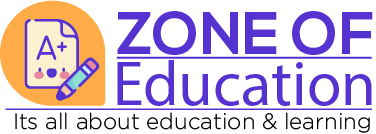

Pragmatism in Education: A Learner-Centered and Practical Approach
Introduction.
Pragmatism is a philosophical approach that prioritizes practicality and experience over theory and abstraction. Similarly, pragmatism in education prioritizes practical outcomes and the needs and interests of the learners when it comes to teaching and learning.
The philosophical writings of Charles S. Peirce, William James, and John Dewey can be used to track the historical development of pragmatism in education. These thinkers believed knowledge is neither permanent or absolute but produced through experience and exploration. In the area of education, Pragmatism emphasises the relevance of practical outcomes and the demands and interests of the learners.
Practical outcomes are emphasised as one of the guiding principles of Pragmatism in education. In education, pragmatism emphasises actual outcomes over theoretical abstractions. This implies that educators should create a curriculum that is meaningful and relevant to their students, with an emphasis on real-world applications. Instructors should also be willing to adapt their instructional ideas and approaches to match the needs and interests of their students.
An additional tenet of pragmatism in education is a focus on the student. In education, pragmatism prioritises the needs and interests of the students. Instructors should act as guides and facilitators rather than authoritative figures, assisting pupils in developing their independence and capacity for critical thought. Learner-centered instruction also requires educators to be adaptable and willing to modify their instructional strategies to meet the requirements of individual pupils.
In education, pragmatism also emphasises the value of experience and experimentation. In education, pragmatism holds that knowledge is acquired by experience and experimentation. Hence, educators should provide students with opportunities to learn through hands-on activities and problem-solving in the actual world. This strategy enables students to recognise the practical applications of what they are learning and to build problem-solving abilities applicable in a variety of circumstances.
Cooperation is another fundamental pragmatist principle in education. Recognizing that learning is typically a social activity, pragmatism in education encourages collaboration and cooperation. Instructors should encourage pupils to collaborate and gain knowledge from one another. Cooperation can also aid in the development of crucial interpersonal skills, such as communication and teamwork.
In education, pragmatism facilitates an interdisciplinary approach to teaching and learning . This strategy acknowledges that real-world issues frequently necessitate diverse views and areas of expertise. Instructors should be willing to combine knowledge from a variety of disciplines and design learning experiences that draw from a variety of fields.
While Pragmatism in education has numerous advantages, it is not devoid of detractors. Others contend that Pragmatism in education gives precedence to practical achievements over other ideals, such as ethics and morality. They contend that educators must consider the ethical implications of their teaching and that pragmatism may not effectively handle these issues. Some argue that Pragmatism in education may overlook the aesthetic aspect of education, such as the appreciation of art, music, and literature. They say that education should not be merely a means to an aim .
In education, pragmatism provides a pragmatic and learner-centered approach to teaching and learning . It stresses practical outcomes, learner-centered instruction, experience and experimentation, cooperation, and multidisciplinary education. In order to implement Pragmatism in their teaching practise, educators must be willing to adapt their teaching methods to meet the needs and interests of their students, provide opportunities for hands-on learning and real-world problem-solving, and foster a collaborative and interdisciplinary learning environment. While Pragmatism in education is not without its critics , it offers a powerful and practical approach to teaching and learning that can assist students in acquiring the skills and information necessary for success in the real world.
Pragmatism is a philosophical perspective that prioritises experience and practise over theory and abstraction.
Charles S. Peirce, William James, and John Dewey contributed to the development of pragmatism in education through their philosophical ideas.
In education, pragmatism stresses practical outcomes and student needs and interests.
A core principle of Pragmatism in education is an emphasis on practical outcomes, stressing real-world applications and adapting teaching strategies to match students’ needs.
A learner-centered approach is another essential principle, with teachers working as guides and facilitators to assist pupils develop critical thinking abilities.
Pragmatism in education places a premium on experiences and experiments, with educators giving opportunities for problem-solving and experiential learning.
Teachers should encourage pupils to collaborate and learn from one another.
Recognizing that real-world problems frequently necessitate several views and areas of expertise, pragmatism in education favours an inter-disciplinary approach to teaching and learning .
Some detractors assert that Pragmatism in education may favour practical objectives over other ideals , including ethics and morality.
Some argue that Pragmatism in education may overlook the aesthetic aspect of education, such as the appreciation of art, music, and literature.
Instructors interested in applying Pragmatism should adjust their teaching techniques to match the needs and interests of their students, give chances for hands-on learning, encourage a collaborative and interdisciplinary learning environment, and address ethical and aesthetic considerations.
Pragmatism in education provides a pragmatic and learner-centered strategy that can assist students in acquiring the skills and knowledge necessary for success in the real world.
- The Growth of Pragmatism in Education Throughout History
Pragmatism is a philosophical perspective that prioritises experience and practise over theory and abstraction. In the field of education, pragmatism emphasises the significance of practical outcomes and the learners’ needs and interests. The philosophical writings of Charles S. Peirce, William James, and John Dewey can be used to track the historical development of pragmatism in education.
- Foundational Pragmatist Thinkers
John Charles Peirce
Charles S. Peirce was an American philosopher, mathematician, and scientist recognised for creating the core concepts of Pragmatism. Peirce felt that knowledge is formed through experience and experimentation and is neither fixed nor absolute. He claimed that ideas should be tested by experiments, and that scientific study should be led by actual consequences rather than abstract concepts. The theories of Peirce lay the foundation for the evolution of pragmatism in education.
The author is William James
William James was an American philosopher and psychologist who expanded and refined Peirce’s views. James thought that knowledge is gained by experience and that concepts should be examined through experimentation. In addition, he felt that education ought to be practical , learner-centered, and heavily focused on real-world applications. James’s theories significantly influenced the evolution of pragmatism in education.
American philosopher and educational reformer John Dewey is regarded as one of the most influential figures in the evolution of pragmatism in education. Dewey felt that education should be applicable to the needs and passions of the students. Students should engage in hands-on learning and real-world problem-solving, according to his argument. The theories of John Dewey had a significant influence on the development of educational theory and practise in the twentieth century.
- Uses of Pragmatism in Education
Curriculum Development
In education, pragmatism stresses practical consequences and relevance to the needs and interests of the students. This method has significant curriculum development implications. The curriculum should be tailored to the needs of the students, with a focus on practical applications. Instructors should also be willing to adapt their instructional ideas and approaches to match the needs and interests of their students.
Learner-Centered Instruction
In education, pragmatism prioritises the needs and interests of the students. Instructors should act as guides and facilitators rather than authoritative figures, assisting pupils in developing their independence and capacity for critical thought. Learner-centered instruction also requires educators to be adaptable and willing to modify their instructional strategies to meet the requirements of individual pupils.
Hands-On Instruction
In education, pragmatism emphasises the value of experience and experimentation. Instructors should provide children with opportunity to learn through hands-on activities and problem-solving in the real world. This strategy enables students to recognise the practical applications of what they are learning and to build problem-solving abilities applicable in a variety of circumstances.
Cooperation and Interprofessional Education
Recognizing that learning is typically a social activity , pragmatism in education encourages collaboration and cooperation. Instructors should encourage pupils to collaborate and gain knowledge from one another. Important interpersonal skills, such as communication and teamwork, can also be developed through collaboration. Recognizing that real-world problems frequently necessitate numerous views and areas of expertise, pragmatism in education likewise promotes an inter-disciplinary approach to teaching and learning .
The philosophical writings of Charles S. Peirce, William James, and John Dewey can be used to track the historical development of pragmatism in education. These scholars thought that knowledge is produced by experience and experimentation, and that education should be appropriate to the learners’ needs and interests. In education, pragmatism has significant consequences for curriculum creation.
- Pragmatism is an educational philosophy that emphasises practicality and experience.
The Founding Philosophers of Pragmatism:
- Charles S. Peirce thought that experience and experimentation construct knowledge.
William James thought that education should be practical, learner-centered, and applicable to real-world situations.
- John Dewey believed that education should be a process of active inquiry, with a focus on experiential learning and problem-solving in the real world.
Pragmatism’s Educational Applications:
- Curriculum Development should prioritise practical goals and relevance to learners’ needs and interests.
- Learner-Centered Instruction should foster autonomous and critical thinking, with the flexibility and adaptability to meet the requirements of each student.
- Hands-On Learning should provide students with opportunities to learn via practical experience and problem-solving in the actual world.
Collaboration and interdisciplinary learning should be fostered in order to cultivate crucial interpersonal skills and diverse viewpoints for addressing real-world issues.
The consequences of pragmatism in education for curriculum development and educational theory and practise are substantial.
In conclusion, Pragmatism in Education is a learner-centered approach that promotes practical outcomes, experience, experimentation, and cooperation to cultivate crucial interpersonal and problem-solving skills.
III. Principal Pragmatist Educational Principles
In education, pragmatism is a philosophical approach that prioritises practical outcomes and the needs and interests of students. It is based on the notion that knowledge is produced by experience and experimentation, and that education should be relevant to the problems that students will encounter in the actual world.
- Concentrate on Useful Outcomes
Practical outcomes are emphasised as one of the guiding principles of Pragmatism in education. This implies that education should be tailored to yield measurable outcomes that are pertinent to the learners’ needs and interests. Teachers should be able to demonstrate the relevance of the skills and knowledge they are imparting to real-world scenarios.
The emphasis on practical outcomes has significant consequences for curriculum design. The curriculum should be tailored to the needs of the students, with a focus on practical applications. Instructors should be able to explain the relevance of the skills and knowledge they are imparting to their students. Instructors should also be willing to adapt their instructional ideas and approaches to match the needs and interests of their students.
- Student-Centered Instruction
Another essential tenet of pragmatism in education is student-centered instruction. This implies that the educational process should be centred on the needs and interests of the students. Instructors should act as guides and facilitators rather than authoritative figures, assisting pupils in developing their independence and capacity for critical thought. Learner-centered instruction also requires educators to be adaptable and willing to modify their instructional strategies to meet the requirements of individual pupils.
Learner-centered instruction has significant consequences for classroom administration. Instructors should endeavour to create an inclusive and supportive learning environment that encourages active engagement and participation. Also, they should create opportunity for students to interact and work together, as well as to follow their individual interests and hobbies.
- Prioritization of Experience and Experimentation
In education, pragmatism places a premium on experience and experimentation. This implies that education should be a process of active inquiry in which students engage in hands-on learning and problem-solving in the actual world. Instructors should provide students with opportunities to learn via experience and experimentation, enabling them to see the practical applications of what they are learning and to acquire transferable problem-solving abilities.
The emphasis on experience and experimentation has significant educational ramifications. Instructors should provide classes and activities that allow pupils to investigate and find new information. In addition, they should provide students with opportunities to apply what they have learned in real-world contexts, such as through service learning or community projects.
- Significance of Cooperation
Recognizing that learning is typically a social activity, pragmatism in education encourages collaboration and cooperation. Instructors should encourage pupils to collaborate and gain knowledge from one another. Important interpersonal skills, such as communication and teamwork, can be fostered through collaboration. It can also aid in the development of a sense of community and shared responsibility among pupils.
The classroom management consequences of collaboration are significant. Instructors should provide an environment that enables students to collaborate and learn from one another. Additionally, they should provide opportunity for students to share their opinions and ideas and contribute meaningfully to the learning process.
- Interdisciplinarity in Education
Recognizing that real-world problems frequently necessitate several views and areas of expertise, pragmatism in education favours an inter-disciplinary approach to teaching and learning. Instructors should aim to incorporate other courses and disciplines into their lessons and activities, so assisting students in recognising the interconnectedness of various fields of study.
The interdisciplinarity of education has significant consequences for curriculum design. Instructors should collaborate to develop interdisciplinary units and projects that incorporate multiple disciplines. Additionally, they should provide students with opportunity to explore their own interests and pursue learning across many courses and disciplines.
The essential concepts of Pragmatism in education include practical outcomes, learner-centered instruction, experience and experimentation, cooperation, and interdisciplinary learning. These ideas have substantial consequences for curriculum design, classroom management , and instructional practises. By adopting a pragmatic approach to education, teachers may help students acquire the skills and information necessary for success in the real world, while also instilling a lifelong love of learning.
Criticisms of Pragmatism in the Field of Education
While Pragmatism has many virtues as an educational philosophy , it is not without its detractors. Some of the most prevalent objections of Pragmatism involve ethical and aesthetic considerations.
- Ethical Issues
One of the primary ethical problems made by critics of Pragmatism is that it is overly focused on practical goals and insufficiently concerned with ethical considerations. Opponents claim that an emphasis on practical goals might lead to a utilitarian approach to education, where the sole objective is to develop economically productive members of society. This might lead to an emphasis on skills and capabilities rather than values, morality, and character development.
Pragmatism can lead to a relativistic morality in which no absolute values or standards exist. While individuals are free to create their own values and morals, this might result in a lack of accountability and responsibility. Opponents assert that this can result in moral relativism and a lack of social cohesion because there is no shared concept of right and evil.
- Aesthetic Critiques
Another prevalent criticism of pragmatism in education is that it disregards the significance of aesthetic learning experiences. Aesthetics is the study of beauty, and critics say that kids must be exposed to art and beauty in order to develop an appreciation for the world around them. This can result in a greater comprehension of culture, history, and society.
Opponents assert that Pragmatism’s emphasis on practical goals can result in a disregard for the arts and humanities and a failing to recognise the significance of aesthetic learning experiences. They claim that children must develop a feeling of beauty and respect for the world around them, which cannot be accomplished by focusing just on practical objectives.
Another critique is that Pragmatism can lead to an emphasis on the instrumental rather than the inherent value of education. Opponents contend that education has intrinsic value and that it is essential to recognise this value. They claim that Pragmatism’s emphasis on practical outcomes can lead to a disregard for education’s inherent value and a failing to recognise the significance of learning for its own sake.
Although Pragmatism as an educational philosophy has many virtues, it is not without its detractors. Opponents claim that an emphasis on practical goals might lead to a utilitarian approach to education, where the sole objective is to develop economically productive members of society. In addition, they contend that Pragmatism might result in a relativistic view of morality and disregard the significance of aesthetic experiences in learning. While considering the advantages and disadvantages of Pragmatism as an educational philosophy, it is essential to evaluate these criticisms.
- Summary of Pragmatism’s Key Ideas
Pragmatism is an educational ideology that stresses practical outcomes, learner-centered instruction, experience and experimentation, cooperation, and interdisciplinary education. It focuses a heavy emphasis on problem-solving and the development of practical skills applicable in the actual world. Pragmatism is also distinguished by its emphasis on the present and rejection of abstract theories and ideals in favour of action.
- Suggestions from Pragmatists to Educators
Pragmatists think that education should be learner-centered and that teachers should assist students in acquiring the skills and information necessary for success in the real world. This involves building a friendly and collaborative classroom climate that encourages students to take an active role in their own learning. Instructors should also help students develop critical thinking and problem-solving abilities and apply what they have learned in relevant and applicable ways.
The Pragmatists also urge that schools emphasise the significance of experience and experimenting in learning. Instructors should provide students with opportunities to learn by doing and apply their knowledge in real-world settings. These may include hands-on exercises, field visits, and other chances for experiential learning.
Students should be encouraged to pursue their interests across many areas and fields, according to Pragmatists. This requires the development of a curriculum that is flexible and adaptable, allowing students to explore their own interests and passions.
Pragmatism is an educational ideology that has had a considerable impact on the area of education. Its emphasis on practical objectives, learner-centered instruction, experience and experimentation, collaboration, and interdisciplinary learning has significant implications for curriculum design, classroom management , and instructional practices. By adopting a pragmatic approach to education , teachers may help students develop the skills and knowledge necessary for success in the real world, while also instilling a lifelong passion for learning.
You may also like
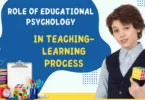
ROLE OF EDUCATIONAL PSYCHOLOGY IN TEACHING-LEARNING...
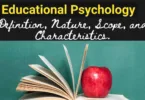
Educational Psychology: Definition, Nature, Scope, and...
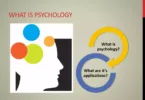
What is Psychology? Meaning and Nature of Psychlogy

13 Scientific Strategies to Help Students and...
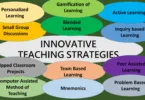
Innovative teaching strategies to enhance...

Exploring 4 Classroom Management Styles
28 comments.
[…] learning is an approach to education that places the Student at the center of the learning process. It shifts the focus from the […]
[…] impact of Essentialism in Education is genuinely remarkable. It has provided us with a powerful and practical approach to educating young people and improving their daily lives. As educators, we must continue to embrace […]
[…] Perennialism and essentialism share some similarities, they are two different educational philosophies with varying approaches to teaching and learning. Perennialism focuses on studying ideas and concepts that will last, while […]
[…] and allows for a more accurate evaluation of each member’s contributions. This unique approach has gained popularity in various educational and professional settings as it promotes teamwork, communication, and problem-solving skills. […]
[…] and Existential Realism are examples of Realism, each with its own focus and approach to Education. Educators can develop a more nuanced and practical approach to teaching and learning by understanding the various types of Realism.Realism, a philosophical […]
[…] away from the casual and interactive nature of the Google Classroom Question Tool, educators may need a more formal and structured approach to facilitate learning. This is where the assignment tool in Google Classroom comes into […]
[…] about the repercussions of their actions. Including consequences for breaking the rules allows educators to maintain a consistent and fair approach to […]
[…] instruction is a practical approach that can be effectively utilized at the early childhood education (ECE) level. It provides young learners with explicit and […]
[…] and emotional learning worksheets and resources provide practical tools for educators to facilitate discussions and activities. Worksheets can cover emotional vocabulary, conflict […]
[…] Lack of Theoretical Depth: The pragmatic approach may prioritize practicality over theoretical depth, potentially limiting the depth of insights in some […]
Thanks on your marvelous posting! I genuinely enjoyed reading it, you may be a great author. I will be sure to bookmark your blog and definitely will come back sometime soon. I want to encourage continue your great job, have a nice day!
[…] Pragmatism is a philosophical approach that puts practicality, action, and verification at the forefront of decision-making and problem-solving. Instead of accepting any particular theory, tradition, or ideology, pragmatists rely on the practical outcomes of ideas and actions to determine truth. They believe in experimentation, problem-solving, and applying knowledge to real-world issues. […]
[…] fundamental principle of Pragmatism in education is a focus on practical outcomes, emphasizing real-world applications and adjusting teaching methods to meet the needs of […]
[…] concept of paradigms in a broader sense. A paradigm is a set of assumptions, concepts, values, and practices that define the way a particular field of study approaches its subject. It provides a framework for […]
[…] Pragmatism is a philosophical approach that emphasizes practicality and action over theory and abstract ideas. Pragmatists believe that the meaning and value of any idea or action can only be determined by its practical consequences. According to Pragmatism, an idea is only valid if it works in practice. Pragmatists reject abstract theories that have no practical value or application. […]
[…] theorists advocate for inclusive education practices that address the diverse needs of all students. This includes considerations of students with […]
[…] the school itself is a laboratory in which the educator is continuously experimenting. This approach of pragmatic thinkers has given immense encouragement to educational psychology and child psychology, both of which have experienced remarkable […]
[…] that students have different learning styles, abilities, and backgrounds is crucial. By adopting a learner-centered approach, teachers can personalize instruction, tailor content delivery, and provide appropriate support to […]
[…] increased time demands and a potential need for more structure. Overall, the heuristic method is a practical approach to teaching that can help students become more independent, critical […]
[…] in education promotes a learner-centered approach that values individuality, freedom, and self-expression. It goes against traditional education […]
[…] perspective on teaching and learning. Understanding these philosophies is critical in shaping educational practices. Here are some of the major philosophies of […]
[…] the evolution of classroom management from a control-and-command model to a more inclusive, learner-centered model mirrors the broader educational changes over the years. The modern approach to classroom management emphasizes creating a positive […]
[…] Briefly explain the concept of team teaching as a collaborative approach in education. […]
[…] Learning by doing and reflecting on experiences are central to their approach. This promotes a practical and hands-on approach to education, emphasizing problem-solving and active […]
[…] This article will cover the importance of differentiated instruction strategies and explore various approaches and examples in different educational […]
[…] Naturalist approach to education also emphasizes the importance of self-government. At Neil’s Summerhill School, learners were […]
[…] the theory lies the practical application of educational psychology in the classroom. A proficient teacher is not only well-versed in pedagogical theory but […]
[…] Accountability: Demonstrates the effectiveness of educational practices and investments to stakeholders like parents and the broader […]

Leave a Comment X
Save my name, email, and website in this browser for the next time I comment.
Classroom Q&A
With larry ferlazzo.
In this EdWeek blog, an experiment in knowledge-gathering, Ferlazzo will address readers’ questions on classroom management, ELL instruction, lesson planning, and other issues facing teachers. Send your questions to [email protected]. Read more from this blog.
Integrating Critical Thinking Into the Classroom

- Share article
(This is the second post in a three-part series. You can see Part One here .)
The new question-of-the-week is:
What is critical thinking and how can we integrate it into the classroom?
Part One ‘s guests were Dara Laws Savage, Patrick Brown, Meg Riordan, Ph.D., and Dr. PJ Caposey. Dara, Patrick, and Meg were also guests on my 10-minute BAM! Radio Show . You can also find a list of, and links to, previous shows here.
Today, Dr. Kulvarn Atwal, Elena Quagliarello, Dr. Donna Wilson, and Diane Dahl share their recommendations.
‘Learning Conversations’
Dr. Kulvarn Atwal is currently the executive head teacher of two large primary schools in the London borough of Redbridge. Dr. Atwal is the author of The Thinking School: Developing a Dynamic Learning Community , published by John Catt Educational. Follow him on Twitter @Thinkingschool2 :
In many classrooms I visit, students’ primary focus is on what they are expected to do and how it will be measured. It seems that we are becoming successful at producing students who are able to jump through hoops and pass tests. But are we producing children that are positive about teaching and learning and can think critically and creatively? Consider your classroom environment and the extent to which you employ strategies that develop students’ critical-thinking skills and their self-esteem as learners.
Development of self-esteem
One of the most significant factors that impacts students’ engagement and achievement in learning in your classroom is their self-esteem. In this context, self-esteem can be viewed to be the difference between how they perceive themselves as a learner (perceived self) and what they consider to be the ideal learner (ideal self). This ideal self may reflect the child that is associated or seen to be the smartest in the class. Your aim must be to raise students’ self-esteem. To do this, you have to demonstrate that effort, not ability, leads to success. Your language and interactions in the classroom, therefore, have to be aspirational—that if children persist with something, they will achieve.
Use of evaluative praise
Ensure that when you are praising students, you are making explicit links to a child’s critical thinking and/or development. This will enable them to build their understanding of what factors are supporting them in their learning. For example, often when we give feedback to students, we may simply say, “Well done” or “Good answer.” However, are the students actually aware of what they did well or what was good about their answer? Make sure you make explicit what the student has done well and where that links to prior learning. How do you value students’ critical thinking—do you praise their thinking and demonstrate how it helps them improve their learning?
Learning conversations to encourage deeper thinking
We often feel as teachers that we have to provide feedback to every students’ response, but this can limit children’s thinking. Encourage students in your class to engage in learning conversations with each other. Give as many opportunities as possible to students to build on the responses of others. Facilitate chains of dialogue by inviting students to give feedback to each other. The teacher’s role is, therefore, to facilitate this dialogue and select each individual student to give feedback to others. It may also mean that you do not always need to respond at all to a student’s answer.
Teacher modelling own thinking
We cannot expect students to develop critical-thinking skills if we aren’t modeling those thinking skills for them. Share your creativity, imagination, and thinking skills with the students and you will nurture creative, imaginative critical thinkers. Model the language you want students to learn and think about. Share what you feel about the learning activities your students are participating in as well as the thinking you are engaging in. Your own thinking and learning will add to the discussions in the classroom and encourage students to share their own thinking.
Metacognitive questioning
Consider the extent to which your questioning encourages students to think about their thinking, and therefore, learn about learning! Through asking metacognitive questions, you will enable your students to have a better understanding of the learning process, as well as their own self-reflections as learners. Example questions may include:
- Why did you choose to do it that way?
- When you find something tricky, what helps you?
- How do you know when you have really learned something?
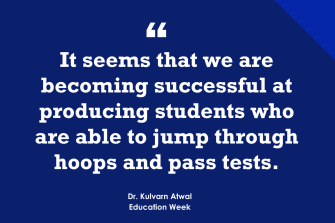
‘Adventures of Discovery’
Elena Quagliarello is the senior editor of education for Scholastic News , a current events magazine for students in grades 3–6. She graduated from Rutgers University, where she studied English and earned her master’s degree in elementary education. She is a certified K–12 teacher and previously taught middle school English/language arts for five years:
Critical thinking blasts through the surface level of a topic. It reaches beyond the who and the what and launches students on a learning journey that ultimately unlocks a deeper level of understanding. Teaching students how to think critically helps them turn information into knowledge and knowledge into wisdom. In the classroom, critical thinking teaches students how to ask and answer the questions needed to read the world. Whether it’s a story, news article, photo, video, advertisement, or another form of media, students can use the following critical-thinking strategies to dig beyond the surface and uncover a wealth of knowledge.
A Layered Learning Approach
Begin by having students read a story, article, or analyze a piece of media. Then have them excavate and explore its various layers of meaning. First, ask students to think about the literal meaning of what they just read. For example, if students read an article about the desegregation of public schools during the 1950s, they should be able to answer questions such as: Who was involved? What happened? Where did it happen? Which details are important? This is the first layer of critical thinking: reading comprehension. Do students understand the passage at its most basic level?
Ask the Tough Questions
The next layer delves deeper and starts to uncover the author’s purpose and craft. Teach students to ask the tough questions: What information is included? What or who is left out? How does word choice influence the reader? What perspective is represented? What values or people are marginalized? These questions force students to critically analyze the choices behind the final product. In today’s age of fast-paced, easily accessible information, it is essential to teach students how to critically examine the information they consume. The goal is to equip students with the mindset to ask these questions on their own.
Strike Gold
The deepest layer of critical thinking comes from having students take a step back to think about the big picture. This level of thinking is no longer focused on the text itself but rather its real-world implications. Students explore questions such as: Why does this matter? What lesson have I learned? How can this lesson be applied to other situations? Students truly engage in critical thinking when they are able to reflect on their thinking and apply their knowledge to a new situation. This step has the power to transform knowledge into wisdom.
Adventures of Discovery
There are vast ways to spark critical thinking in the classroom. Here are a few other ideas:
- Critical Expressionism: In this expanded response to reading from a critical stance, students are encouraged to respond through forms of artistic interpretations, dramatizations, singing, sketching, designing projects, or other multimodal responses. For example, students might read an article and then create a podcast about it or read a story and then act it out.
- Transmediations: This activity requires students to take an article or story and transform it into something new. For example, they might turn a news article into a cartoon or turn a story into a poem. Alternatively, students may rewrite a story by changing some of its elements, such as the setting or time period.
- Words Into Action: In this type of activity, students are encouraged to take action and bring about change. Students might read an article about endangered orangutans and the effects of habitat loss caused by deforestation and be inspired to check the labels on products for palm oil. They might then write a letter asking companies how they make sure the palm oil they use doesn’t hurt rain forests.
- Socratic Seminars: In this student-led discussion strategy, students pose thought-provoking questions to each other about a topic. They listen closely to each other’s comments and think critically about different perspectives.
- Classroom Debates: Aside from sparking a lively conversation, classroom debates naturally embed critical-thinking skills by asking students to formulate and support their own opinions and consider and respond to opposing viewpoints.
Critical thinking has the power to launch students on unforgettable learning experiences while helping them develop new habits of thought, reflection, and inquiry. Developing these skills prepares students to examine issues of power and promote transformative change in the world around them.

‘Quote Analysis’
Dr. Donna Wilson is a psychologist and the author of 20 books, including Developing Growth Mindsets , Teaching Students to Drive Their Brains , and Five Big Ideas for Effective Teaching (2 nd Edition). She is an international speaker who has worked in Asia, the Middle East, Australia, Europe, Jamaica, and throughout the U.S. and Canada. Dr. Wilson can be reached at [email protected] ; visit her website at www.brainsmart.org .
Diane Dahl has been a teacher for 13 years, having taught grades 2-4 throughout her career. Mrs. Dahl currently teaches 3rd and 4th grade GT-ELAR/SS in Lovejoy ISD in Fairview, Texas. Follow her on Twitter at @DahlD, and visit her website at www.fortheloveofteaching.net :
A growing body of research over the past several decades indicates that teaching students how to be better thinkers is a great way to support them to be more successful at school and beyond. In the book, Teaching Students to Drive Their Brains , Dr. Wilson shares research and many motivational strategies, activities, and lesson ideas that assist students to think at higher levels. Five key strategies from the book are as follows:
- Facilitate conversation about why it is important to think critically at school and in other contexts of life. Ideally, every student will have a contribution to make to the discussion over time.
- Begin teaching thinking skills early in the school year and as a daily part of class.
- As this instruction begins, introduce students to the concept of brain plasticity and how their brilliant brains change during thinking and learning. This can be highly motivational for students who do not yet believe they are good thinkers!
- Explicitly teach students how to use the thinking skills.
- Facilitate student understanding of how the thinking skills they are learning relate to their lives at school and in other contexts.
Below are two lessons that support critical thinking, which can be defined as the objective analysis and evaluation of an issue in order to form a judgment.
Mrs. Dahl prepares her 3rd and 4th grade classes for a year of critical thinking using quote analysis .
During Native American studies, her 4 th grade analyzes a Tuscarora quote: “Man has responsibility, not power.” Since students already know how the Native Americans’ land had been stolen, it doesn’t take much for them to make the logical leaps. Critical-thought prompts take their thinking even deeper, especially at the beginning of the year when many need scaffolding. Some prompts include:
- … from the point of view of the Native Americans?
- … from the point of view of the settlers?
- How do you think your life might change over time as a result?
- Can you relate this quote to anything else in history?
Analyzing a topic from occupational points of view is an incredibly powerful critical-thinking tool. After learning about the Mexican-American War, Mrs. Dahl’s students worked in groups to choose an occupation with which to analyze the war. The chosen occupations were: anthropologist, mathematician, historian, archaeologist, cartographer, and economist. Then each individual within each group chose a different critical-thinking skill to focus on. Finally, they worked together to decide how their occupation would view the war using each skill.
For example, here is what each student in the economist group wrote:
- When U.S.A. invaded Mexico for land and won, Mexico ended up losing income from the settlements of Jose de Escandon. The U.S.A. thought that they were gaining possible tradable land, while Mexico thought that they were losing precious land and resources.
- Whenever Texas joined the states, their GDP skyrocketed. Then they went to war and spent money on supplies. When the war was resolving, Texas sold some of their land to New Mexico for $10 million. This allowed Texas to pay off their debt to the U.S., improving their relationship.
- A detail that converged into the Mexican-American War was that Mexico and the U.S. disagreed on the Texas border. With the resulting treaty, Texas ended up gaining more land and economic resources.
- Texas gained land from Mexico since both countries disagreed on borders. Texas sold land to New Mexico, which made Texas more economically structured and allowed them to pay off their debt.
This was the first time that students had ever used the occupations technique. Mrs. Dahl was astonished at how many times the kids used these critical skills in other areas moving forward.

Thanks to Dr. Auwal, Elena, Dr. Wilson, and Diane for their contributions!
Please feel free to leave a comment with your reactions to the topic or directly to anything that has been said in this post.
Consider contributing a question to be answered in a future post. You can send one to me at [email protected] . When you send it in, let me know if I can use your real name if it’s selected or if you’d prefer remaining anonymous and have a pseudonym in mind.
You can also contact me on Twitter at @Larryferlazzo .
Education Week has published a collection of posts from this blog, along with new material, in an e-book form. It’s titled Classroom Management Q&As: Expert Strategies for Teaching .
Just a reminder; you can subscribe and receive updates from this blog via email (The RSS feed for this blog, and for all Ed Week articles, has been changed by the new redesign—new ones won’t be available until February). And if you missed any of the highlights from the first nine years of this blog, you can see a categorized list below.
- This Year’s Most Popular Q&A Posts
- Race & Racism in Schools
- School Closures & the Coronavirus Crisis
- Classroom-Management Advice
- Best Ways to Begin the School Year
- Best Ways to End the School Year
- Student Motivation & Social-Emotional Learning
- Implementing the Common Core
- Facing Gender Challenges in Education
- Teaching Social Studies
- Cooperative & Collaborative Learning
- Using Tech in the Classroom
- Student Voices
- Parent Engagement in Schools
- Teaching English-Language Learners
- Reading Instruction
- Writing Instruction
- Education Policy Issues
- Differentiating Instruction
- Math Instruction
- Science Instruction
- Advice for New Teachers
- Author Interviews
- Entering the Teaching Profession
- The Inclusive Classroom
- Learning & the Brain
- Administrator Leadership
- Teacher Leadership
- Relationships in Schools
- Professional Development
- Instructional Strategies
- Best of Classroom Q&A
- Professional Collaboration
- Classroom Organization
- Mistakes in Education
- Project-Based Learning
I am also creating a Twitter list including all contributors to this column .
The opinions expressed in Classroom Q&A With Larry Ferlazzo are strictly those of the author(s) and do not reflect the opinions or endorsement of Editorial Projects in Education, or any of its publications.
Sign Up for EdWeek Update
Edweek top school jobs.

Sign Up & Sign In


IMAGES
VIDEO